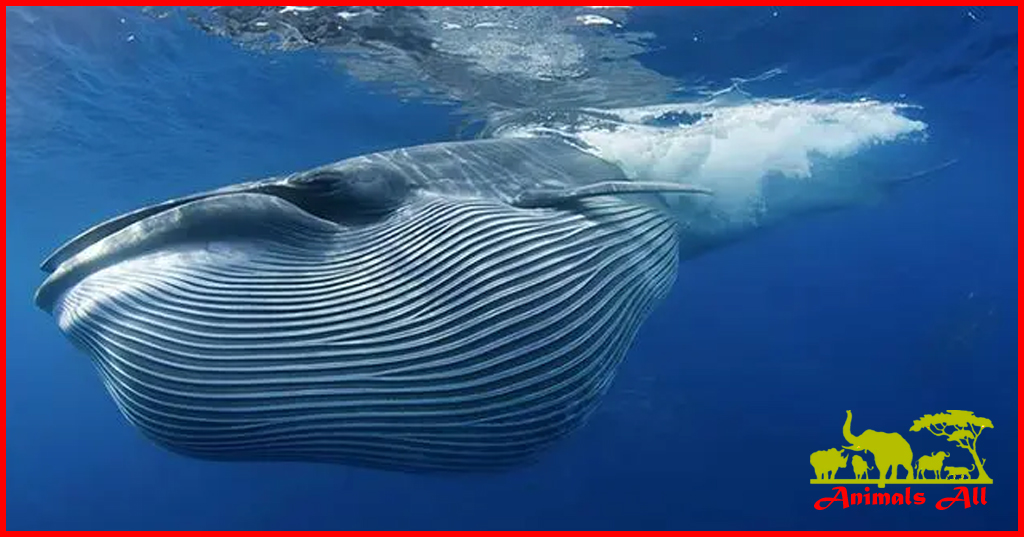
Blue whale feces machine, excrete up to 2 tons of feces at a time!
What does this huge blue whale eat in the vast ocean? How much food does its huge body need to maintain its vitality?
Surprisingly, blue whales feed on tiny creatures. They love krill, and when they hunt, they open their huge mouths and swim straight to the krill. Because of their huge mouths and wide esophagus, many krill are swallowed without noticing. If their brain capacity allows, they may wonder: “Why is the sea water dark? Who extinguished the sun?”

The blue whale skillfully ejects the seawater it has sucked in along with the shrimps, creating a spectacular water column on the sea surface. Its height is astonishing, creating a unique landscape in the ocean.
China Economic Net reported in 2018 that the global whale population may have dropped sharply to less than 4,000. In 1989, biologists predicted that there were only 200 to 435 blue whales left. This gap was attributed to the vast ocean and the extensive activities of blue whales, making traditional biological statistical methods such as the mark-recapture method difficult to apply.

Protected species
In 1966, the blue whale became an internationally protected species, and the world has widely recognized its ban on hunting, except for Japan. Japan has repeatedly applied to lift the ban, claiming that whaling is for scientific research. In fact, all countries know that this is just an excuse for carnivory, which is extremely hypocritical.
As a key species in the marine ecosystem, the existence of the blue whale is irreplaceable in maintaining the ecological balance and plays a decisive role in the stability of the marine food chain.
Talking about “whale fall”, this magnificent natural phenomenon is actually the continuation of life. After the whale dies, its body nourishes the biological community on the seabed, and its bones become a shelter for small animals to avoid the impact of ocean currents, showing the harmonious coexistence between ecosystems.
During its existence, the blue whale provides abundant nutrients for the sea creatures. Its excrement is like a godsend, which is an extremely valuable resource for the sea creatures, just like the light of righteousness, illuminating the huge body of the blue whale.
The excrement of a blue whale weighs more than that of a water buffalo, which is enough for sea creatures to enjoy. When it excretes, its feces can float hundreds of meters away, nourishing algae and microorganisms on the seabed far away. With its generous “fertilization” behavior, the blue whale has become a true “beneficiary” of the underwater world.
As we all know, a human can excrete about 11 tons of feces in his lifetime. However, the amount of feces excreted by a blue whale in one time is equivalent to the total amount of human excretion in more than ten years. This huge difference makes people curious: How do blue whales achieve this feat?
King of the earth
The blue whale, the king of the earth, weighs up to 180 tons and can be over 30 meters long. Its water spray can reach a height of 12 meters, as spectacular as a four-story building. It can swallow 3 tons of krill in one meal, eat 5 tons a day, and excrete 2 tons of feces, demonstrating its huge appetite.
The blue whale’s huge size is particularly evident when it comes to reproduction. As a mammal, the blue whale is closely related to cattle and horses. Each litter only produces one calf, but it weighs 2.5 tons, making it the largest in the ocean. Despite this, the gestation period is only 10 to 12 months, and the calf needs to consume more than 500 liters of high-fat milk every day, which is rich in calories and nutrients ten times that of cow’s milk.
Young blue whales learn from their mothers until they become independent after mastering hunting skills. The blue whale society is centered on the matriarchy. Female whales may stay in the family after adulthood, while male whales go out and join new groups. The family usually consists of more than a dozen whales, with the older female whales as the leader.
The blue whale, as a member of the whale group, has demonstrated outstanding intelligence, and its IQ far exceeds that of other fish in the ocean. In the contest of intelligence, only killer whales, humpback whales and dolphins can match it, which shows its extraordinary intelligence.
Unique sound
Blue whales use their unique sound waves to communicate underwater, emitting low-frequency strong sounds of 10 to 40 Hz and up to 180 decibels, which can be transmitted as far as 1,000 kilometers. They even enjoy this and interact with each other through sound waves, just like singing folk songs. Among many whales, the blue whale has the loudest voice, showing the unique charm of its family.
The human navy often complains that the noise of blue whales hinders sonar detection, and blue whales also hate the ocean noise created by humans. These noises interfere with the blue whales’ courtship communication, just like the roar of an excavator covering up the call of a girl on the other side, and the blue whales are deeply unhappy.
Scientists have detected that blue whales have reduce the frequency of their calls in recent years and switched to low-frequency communication. This change is due to the strong resistance to interference of low-frequency sounds. Which means that they have adjusted their communication methods, and this change is also indirectly caused by human activities.
